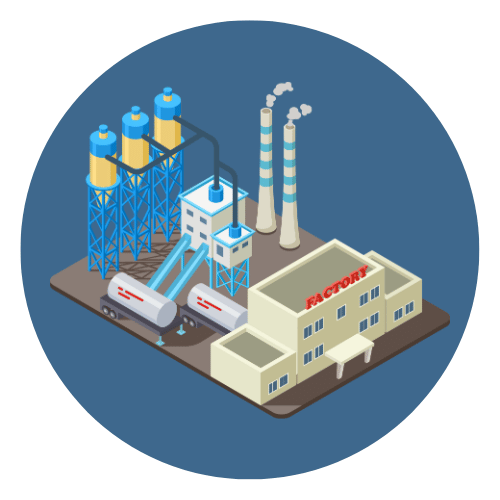II. How Does a Check Valve Work?

A check valve operates based on the principle of allowing airflow in one direction while automatically preventing reverse flow. The valve responds to the pressure differences within a pneumatic system, opening and closing as needed to ensure unidirectional flow. Here’s a step-by-step breakdown of how a check valve works:
1. Forward Flow:
When the pressure on the inlet side of the valve exceeds the pressure on the outlet side, the check valve opens. This process occurs when the cracking pressure (the minimum pressure required to open the valve) is surpassed. The force of the air pushes against the internal mechanism of the valve (e.g., a ball, disc, or piston), moving it aside and allowing air to flow through.
2. Closing Mechanism:
As soon as the pressure on the inlet side decreases or attempts to reverse, the check valve automatically closes. This happens when the pressure on the outlet side becomes greater than or equal to the inlet pressure, causing the internal mechanism to be pushed back into its closed position. The closing mechanism could involve a spring or gravity-assisted design that helps the valve return to a sealed state, effectively stopping reverse flow.
3. Reverse Flow Prevention:
The main function of the check valve is to block any attempt at reverse flow. When air tries to flow backward, the valve’s internal mechanism remains closed, sealing off the passage. This prevents air from flowing in the opposite direction, protecting downstream components from potential damage due to backpressure.
Internal Components of a Check Valve:
- Valve Body: The outer casing that houses the internal components and provides a path for air.
- Internal Seal (Disc, Ball, or Piston): The moving part that opens or closes to allow or prevent airflow.
- Spring (in some designs): A spring may be used to assist in the closure of the valve by pushing the internal seal back into position when the pressure drops.
Pressure Differential:
The function of the check valve is entirely dependent on the pressure differential between the inlet and outlet sides. The greater the difference in pressure, the more effective the valve will be in regulating airflow and preventing backflow.
Summary of Check Valve Operation:
- When pressure is high enough at the inlet, the valve opens, allowing air to flow through.
- When pressure decreases or reverses, the valve closes to prevent backflow.
- This automatic response keeps pneumatic systems functioning safely and efficiently.
By using simple pressure-based mechanics, check valves play an essential role in maintaining the proper direction of air movement in various pneumatic applications.


 Automation System
Automation System  Energy Engineeing
Energy Engineeing  Instrumentation System
Instrumentation System  Mechanical Engineeing
Mechanical Engineeing  Piping Technologies
Piping Technologies  Transportations
Transportations  Manufacturing
Manufacturing  Training Material
Training Material 









